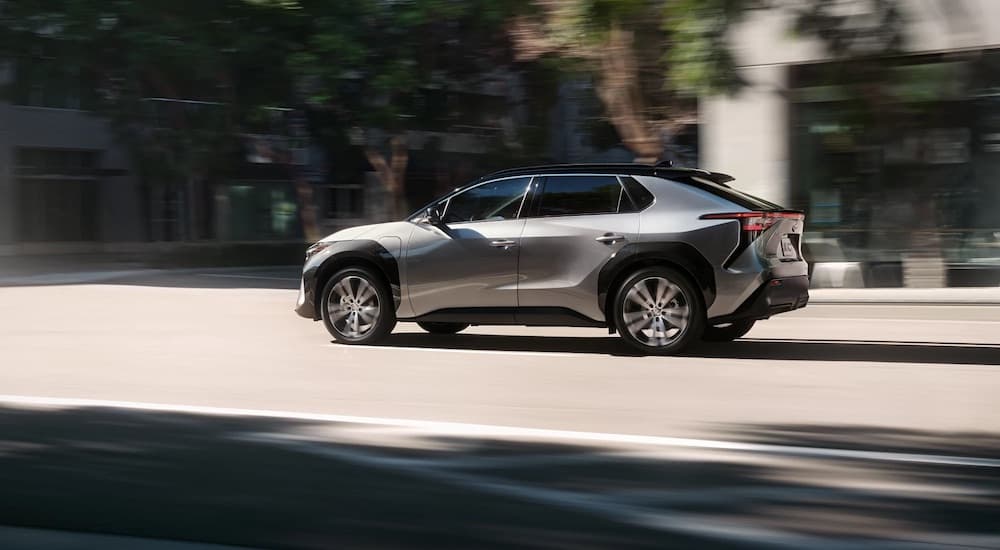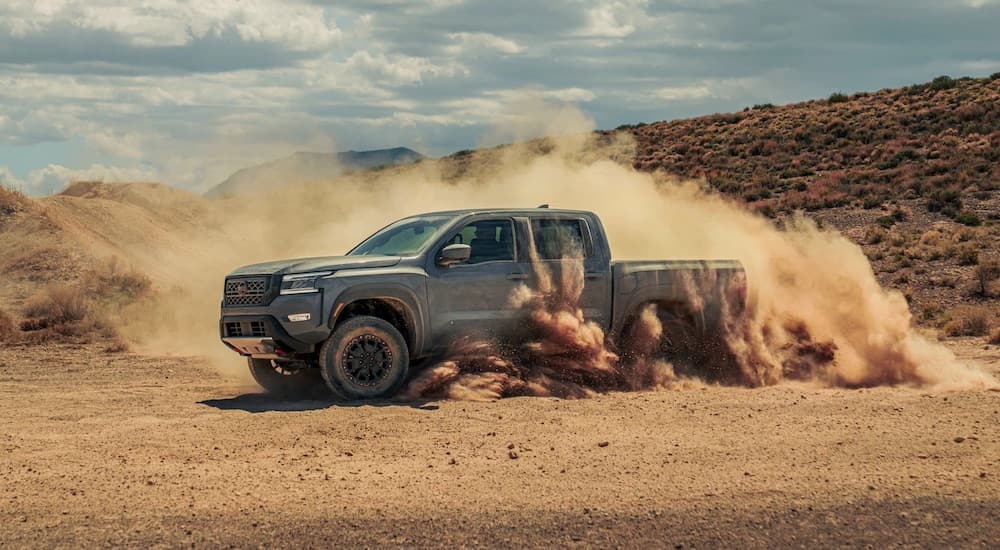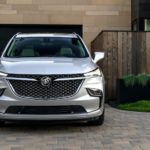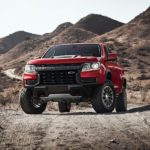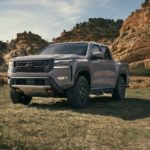The automotive industry sees its fair share of ups and downs every year, but 2022 proved one for the record books in many ways. The year brought heightened demand for new vehicles, putting more pressure on automakers to deliver despite still feeling the pain of the pandemic and the onslaught of supply chain issues and labor shortages. We saw the effects firsthand as many dealerships struggled to find inventory to fill their lots. Still, that barren aesthetic might not be such a bad thing after all, as it forces the industry to pivot and focus more on customer needs.
The increased demand for new vehicles inspires a shift in the automotive industry just as much as it reinvigorates healthy competition. Automakers are fighting supply chain and labor shortages to meet driver demands, which we see with the introduction of new models and the burgeoning EV segment. But this rush to deliver has also caused a few quality and reliability concerns, with J.D. Power reporting the industry has hit a 36-year low. So, how has this affected the market, from automakers to drivers? Here’s a look at the highs and lows from 2022.
Chevy Bolt Fires
The Chevy Bolt has earned a prominent place in the EV segment with its affordable price tag and incredible value. However, the Bolt’s reputation took a significant hit in 2022 when the EV made headlines after numerous models caught fire. As a result, General Motors issued several recalls affecting 2017-2022 models, citing the high-voltage battery pack as the culprit.
With the recall, GM encouraged Bolt owners to park their vehicles outside and away from any structures, not to charge the Bolt overnight, and not to wait until the battery depleted to recharge. Beyond this sage advance, GM continues to remedy the issue by replacing the defective lithium-ion battery modules and including a software update. The software update automatically sets the Bolt’s maximum state of charge to 80% and allows drivers to run the EV below a 70-mile range, park it indoors after charging, and even recharge it indoors overnight.
Toyota bZ4X Losing Wheels
The Chevy Bolt fires weren’t the only catastrophe in 2022, with the Toyota bZ4X taking a different approach in ruining a good day behind the wheel. Loose hub bolts on the bZ4X meant the EV’s wheels could easily fall off and create hazardous driving conditions. With the bZ4X marking the automaker’s long-awaited return to the EV segment, the issue was gut-wrenching and forced a widespread recall that left many bZ4Xs parked and many drivers with buyer’s remorse.
Toyota offered free loaner vehicles and fuel to bZ4X owners, hoping to minimize inconvenience and retain driver loyalty as the automaker worked to resolve the issue. However, finding a solution took longer than anticipated and forced Toyota to sweeten the deal with a buyback program, complimentary charging at EVgo stations, and extended warranty coverage. By October, Toyota announced a solution to the issue––installing redesigned hub bolts with washers and updated wheels––would be available at Toyota dealerships starting in November.
Out With the Old and in With the New
We’re seeing a remarkable shift in the industry as more automakers jump on the bandwagon to build an all-electric future with zero emissions. The burgeoning EV segment ignites swift changes across the board and inspires automakers to reevaluate their current offerings. For example, Dodge discontinued its powerful, gas-guzzling Durango SRT Hellcat to focus on improving the three-row Durango for 2022.
Dodge isn’t alone in honing its focus, with Buick, Chevrolet, Honda, Jeep, Nissan, Toyota, and many others following suit. For example, Buick bids a fond farewell to the Encore, and Chevrolet is discontinuing the Spark, once the most affordable car in America. The Chevy Trax gets a one-year hiatus until its 2024 redesign, but other models, like the Nissan Rogue Sport, Toyota Avalon, and Honda Insight aren’t as lucky and are shelved for the unforeseeable future.
Despite these discontinuations, automakers found plenty of room to introduce new and exciting options. 2022 introduced the world to the upcoming Silverado EV pickup truck and the return of the GMC Hummer EV, a far cry from its gas-guzzling predecessor and a debut we’re still anxiously awaiting. Chevrolet also introduced us to the Bolt EUV, taking the best-selling Bolt (fires aside) and putting it on a larger SUV platform. The year also brought a new benchmark of American luxury with the Grand Wagoneer, the first offering under the Wagoneer brand.
A Long-Awaited Update to the Nissan Frontier
Since its debut decades ago, the Frontier has built its reputation as a utilitarian workhorse that can handle every demand and driving condition. Nissan has relied on that reputation for far longer than any other automaker, making only minor updates to the Frontier over the last 17 years. The cricket-like silence from Nissan left many wondering if Nissan genuinely got the design right the first time or if the Frontier was forever stuck in a time warp.
Fortunately, the answer came in 2022 when Nissan finally redesigned the Frontier and ushered the truck into a modern era of innovation and capability. The 2022 Frontier comes out of the gate better than ever with a best-in-class 310-horsepower engine, a rugged design, the largest-in-class touchscreen display, and a host of technology like class-exclusive Intelligent Forward Collision Warning and the Nissan Safety Shield 360 suite. While 17 years is a long time to wait for a redesign, the 2022 Frontier proves that sometimes the wait is worthwhile.
Big Plans for the Future From Cadillac and Toyota
Automakers constantly look to the future, teasing us with new concepts that promise a more modern and dynamic experience on the road. These concepts run the spectrum from ultra-modern to ultra-versatile, as we see from two exciting ideas proposed by Cadillac and Toyota. So, what can we expect from these teasers?
Cadillac introduced the InnerSpace Autonomous Concept vehicle at CES 2022. The fully autonomous vehicle relies on GM’s revolutionary Ultium Platform and allows two passengers to enjoy their journey without the need to drive or navigate the car. Enjoying the journey is easy, thanks to the panoramic glass roof and upper body sides offering unimpeded views. Cadillac’s use of the Ultium Platform enhances this experience, positioning the car’s floor lower to the road for a sports car-like feel.
While Cadillac’s InnerSpace Concept is futuristic, Toyota’s Trailhunter is more practical and recently debuted at SEMA 2022. Toyota’s reputation in the off-road realm is unparalleled, with models like the 4Runner, Tacoma, and Tundra staples on the trail. Toyota plans to build on that reputation with its Trailhunter Tundra concept explicitly designed for off-roaders. It features a uniquely tuned suspension, roof rack, and skid plates, but it also accounts for modifications (cue a round of applause from fellow gearheads).
Although it will roll off the production line ready for the trail, the Trailhunter gives overlanders plenty of opportunities to modify the rig with an ever-growing lineup of OEM accessories. The accessories will be available through Toyota’s newly established Associated Accessory Products, which includes rooftop tents, refrigerators, lighting, and bumpers. With the new accessory line, many believe the Trailhunter trim will eventually be available on models like the Tacoma and 4Runner.
Looking Ahead
From battery fires and wheels spinning off to a host of reliability and quality issues, 2022 was a rollercoaster for the automotive industry. Yet, it wasn’t all bad. It also introduced us to remarkable new models, like the Grand Wagoneer, Chevy Bolt EUV, GMC Hummer EV, Ford Maverick, and Chevy Silverado EV. In addition, the year brought a long-awaited redesign to capable workhorses like the Nissan Frontier and teased us with concepts like the Toyota Trailhunter.
These highs and lows are expected. In light of the pandemic and its aftermath, automakers are continuing to rebuild and regain their footing as they fight supply chain issues and face ongoing labor shortages. At the same time, demand for vehicles remains high. We not only need new vehicles; we want them. This increasing demand is lighting a fire under automakers to deliver or face the consequences of shifting loyalty. As a result, we see the ebb and flow of success and failure, with automakers learning valuable lessons as they rush to deliver the cars, trucks, and SUVs we so desperately want sooner rather than later.


